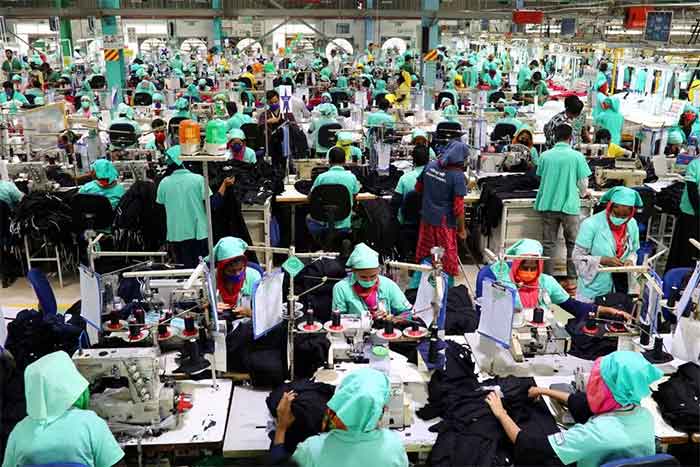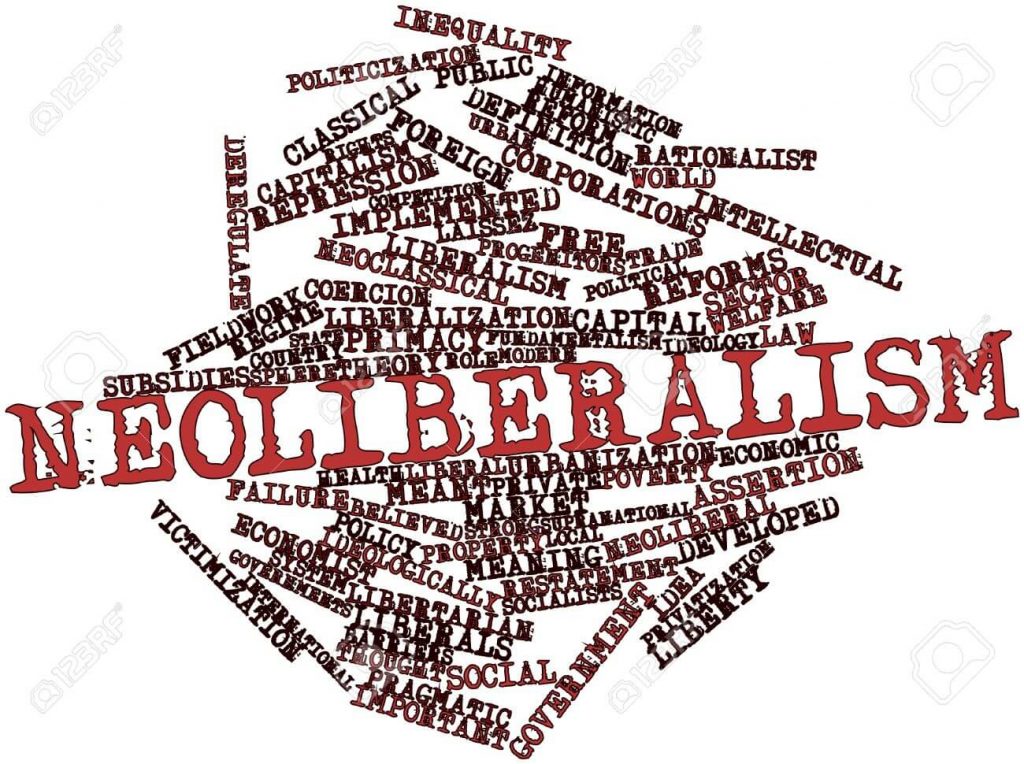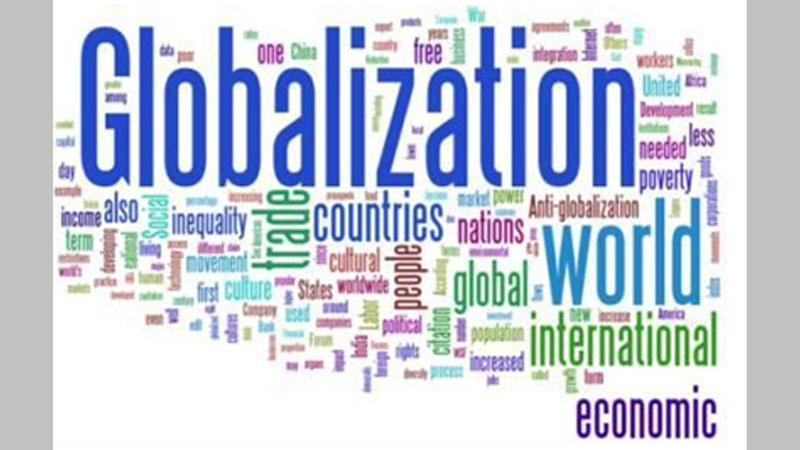
As global connections continue to develop in the twenty-first century under the conditions of globalization, periphery and semi-periphery nations try to adapt to the norms of core countries with the aim of developing a similar global influence as developed nations. Throughout history, people of different cultures have migrated to countries with cultures different from theirs. As people move from location to location, they bring along their traditions and cultural norms, which influences others to assimilate various aspects of the foreign culture and integrate it into their own. This process is known as cultural diffusion. The spreading of culture can be classified into two categories, forced integration of culture –known as cultural imperialism– and naturally occurring homogenization. Cultural imperialism is usually due to the colonization or occupation of a country by a foreign power with more global influence.
As the world becomes increasingly globalized, periphery and semi-periphery countries endeavor to reach the same economic positions of core countries, which they undertake by concurring with the cultural norms of highly developed countries. Core countries are tremendously influential, so much so that people that migrate to core countries from lesser developed countries usually acculturate to the cultural standards of the core nation. These give rise to two critical questions of our time: How does homogenization and hybridization result from globalization? What are the pros and cons?
The Path to a Homogenized Global Culture?
Core countries, which are nations that are highly developed, can be found at the top of the hierarchy of globally influential countries. This is because these countries are usually industrialized and have periphery and semi-periphery countries that depend on them. Behind the system of interdependence is a well-functioning, stable, and successful economy, which allows these core countries to be more opulent than others. Being a core country is the primary economic goal of periphery and semi-periphery countries, which is why they often try and follow in the footsteps of developed core nations. The lesser developed countries try to develop themselves in a similar manner to the development of core countries by imitating their culture. This is apparent in many non-core, developing countries. As the world becomes more globalized, all cultures are slowly –but surely– becoming the same. Here, we will use the examples such as the case of Azerbaijan, a developing nation, to show how homogenization and hybridization are resulting from globalization today.
Language
As the number of global connections increase, the need for efficient communication does too. Language serves as both a means and a barrier of interpersonal transmission, which is why the number of international languages has been decreasing for centuries. Many languages spoken exclusively by minorities are dying because the speakers are adapting to more popular languages. In Azerbaijan, the people –especially the youth– are starting to learn English to embrace the culture of developed countries. They also tend to combine some aspects of the Russian language with their own Azerbaijani dialect, which shows the effect and influence of their past occupiers. This expresses the concept of cultural hybridization, as two cultures are put together instead of one overpowering the other. Another example would be Morocco, in which the people speak a dialect that is a mix of Arabic and French. As for a language that is dying, the Chamicuro language, spoken by the indigenous Chamicuro people of Peru, has become an endangered dialect since the indigenous tribe had decided to become modernized and started to embrace Spanish as their primary language. The transitions of countries to international languages –such as English, French or Arabic– allows for homogenization as different cultures use the same language, since it makes them become more similar to each other. The uniqueness of cultures is fading as international languages become more common, people are able to communicate with others more easily and more effectively than before. Although many cultures are nearing extinction, many people from different parts of the world are taking the initiative to revive certain languages by learning about them, which is made possible by globalization, as it allows people to learn more about extinct and endangered languages from around the globe. Languages which are –to some degree– significant to the people that they belong to and their historical context are becoming endangered. For example, Chamicuro, spoken by the Chamicuro tribe in Peru, is becoming replaced with Spanish. This trend can be observed within many tribal languages. This gives a partial representation of the effect of cultural homogenization, as languages that are widespread are staring to diminish, with international languages replacing them.
Ideologies
In the globalized world that we live in, most of the core countries are secular, which denotes that they are less or not involved in religious or spiritual matters. Many developing countries that attempt to imitate the cultural normalities of developed countries often assimilate secularism in order to create stronger alliances with core countries, as well as to follow the path of progression that was taken by the core countries. Azerbaijan is currently listed as a secular country, which would seem rather unlikely as the majority of the population are Shi’ite Muslim, which tend to be religiously conservative. Cultural hybridization is also prevalent in this example, since Azerbaijan is an openly progressive country, but at the same time it retains its unitary government. This exemplifies the notion that core countries influence developing countries through means such as political doctrines. Other political ideologies include democracies and progressivism. Since different countries with significantly different cultures have the same ideologies, which dictate their values and make them increasingly similar. This is more of an advantage, as countries with parallel beliefs and ideologies have a tendency to develop stronger alliances. Although countries having similar ideologies provides several benefits, it still offers a few disadvantages, for example, some countries choose to have different political dogmas because of its culture, majority religion, or geographic location, which causes uncertainty of the relationship with countries that have differing ideologies. A country’s ideologies –whether it be political or social– are substantially important to how it is viewed, which impacts its global influence.
Cultural Arts
Cultural arts are a major part of a country’s unique norms and traditions, especially in lesser-developed countries where folk music and art are more prevalent than modernist values of highly developed countries. Azerbaijan used to be known for its Mugham –a folk musical composition that was regarded as a highly complex art form that fused together classic poetry and musical improvisation– but now it is known for its operas and plays that take place in its theaters. Originally, opera was an Italian art which was embraced by many nations that are now core countries. Since Azerbaijan is one of the countries that imitates the culture of developed countries, it includes opera as one of its cultural art forms, which conveys the country’s homogenization of particularly “Western” culture. Traces of cultural imperialism can also be found in the roots of Azerbaijani culture as some remnants of Russian culture can be found in the country’s art, which was due to the forced Russian occupation of Azerbaijan. Cultural homogenization is prevalent, as different cultures assimilate art forms of other cultures which cause them to become even more similar than they were before. On the other hand, through increased global connections, people can also have the opportunity to learn about foreign cultural arts and study them, which allows them to be preserved and not forgotten. Cultural arts are undeniably a preeminent facet of individual cultures that reflect the distinctive values that people believe in, so the assimilation towards similar, if not the same, art forms can diminish the concept of personal identity. On the other hand, progressing towards a single form of art would allow both core and periphery countries to better relate to one another, thus developing stronger bonds between nations.
Other Forms of Influence
Globalization is a means of influence for core countries, since developing countries with the aim to improve economically look up to developed countries and follow in their footsteps. Cultural homogenization –as well as hybridization– takes place, since the cultures of periphery and semi-periphery countries are susceptible to changes, as adaptations towards cultures of developed countries gives people a sense of improvement, since they are able to relate to more developed countries and follow the same progressive pattern as core nations. Apart from language, ideologies, and cultural arts, cultural homogenization is prevalent through architecture, food, and fashion. As the world progresses, so does architecture. Newer building designs are innovated to accommodate the growing population and modernism that resides in developed countries, which are reproduced by influenced periphery and semi-periphery countries. In non-core countries, ultra-modern architecture shows the substantial influence that core countries have. Modern architecture abolishes cultural identity in cities, but at the same time it allows for more stable architecture and accommodation for growing populations. Although new, modern architecture is being developed, Azerbaijan still has some towns which retain traditional Turkish-Azerbaijani houses and buildings. There are a few foreign designer clothing brands, such as Gucci and Balenciaga that are pinpointed in the city of Baku, Azerbaijan, which shows the influence of more developed countries through terms of fashion. This doesn’t serve any significant advantages, other than lessening discrimination and security concerns caused by foreign clothing. The influence of modern clothing choice and popular “fashion” demolishes the concept of individualism through cultural clothing. On the contrary, many Azerbaijanis retain some cultural aspects through religion, as many Muslim women wear the headscarf for religious –and cultural– purposes. Foreign fast food restaurants, such as McDonald’s and KFC, are also prevalent in non-core countries such as Azerbaijan. Foreign fast food restaurants allow more job opportunities for people in developing countries, but it also diminishes the cultural taste preferences of the local people. But some fast food companies change certain menu items to fit in with the cultural food of the restaurant that their restaurants are in, which allows for cultural hybridization through means of “glocalization”. Although the number of fast-food restaurants is increasing, Azerbaijani households usually serve the same traditional food, as it relies on the readily available ingredients distinctive to Azerbaijan. There are many other forms of influence from core countries that affect the cultures of periphery and semi-periphery countries, whether it be a positive change that allows for more advantages, or a negative change that causes more disadvantages to the developing country.
Cultures of different countries are slowly becoming more and more similar as global connections and foreign influences increase. At one point, individual cultures may become almost the same as the cultures that influence them, which are mainly the highly developed core countries with the most economic influence. Developing countries aiming to economically progress to the level of core countries try to do so by adapting to the cultural norms of global superpowers. This usually results in homogenization, where cultures become increasingly similar, so much so that a single global culture has the possibility to be established. Countries that have been occupied or invaded in the past also retain remnants of their invaders’ culture, which is known as cultural imperialism. Lastly, some countries try to coalesce their own cultures with the cultures of other nations to adapt to modern “culture” and retain their own identity simultaneously, which was described as cultural hybridization. By analysing the examples of Azerbaijan –as well as other developing countries– the progression towards one global culture is prevalent, with the most influential cultural aspects being of developed Western nations. In summary, core countries with great economic control often influence countries with the objective of major development to adapt to their culture, slowly bringing us to a more unified, global culture.
Rawsab Said is a Canadian writer currently living in Singapore. Email: [email protected]















































